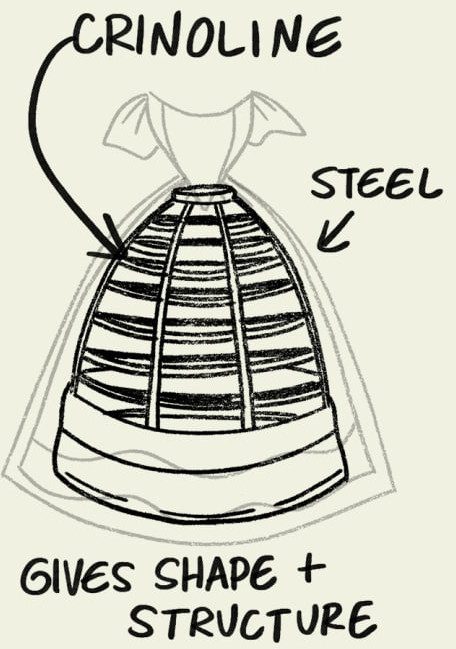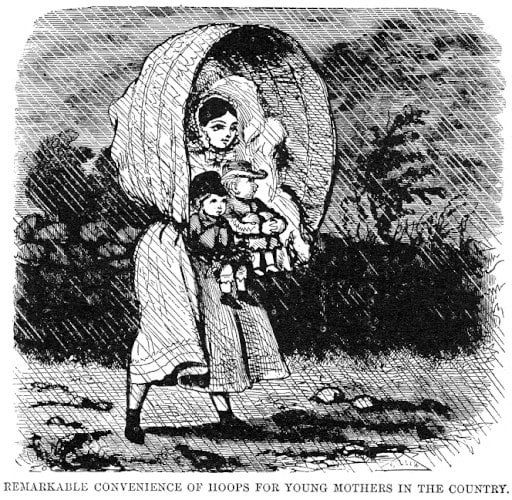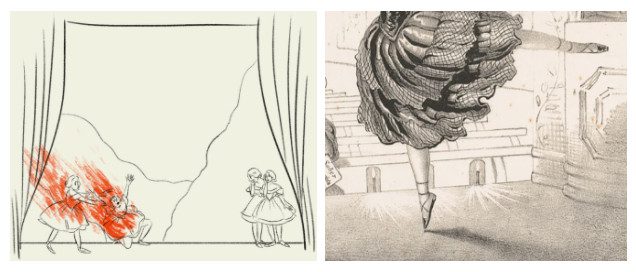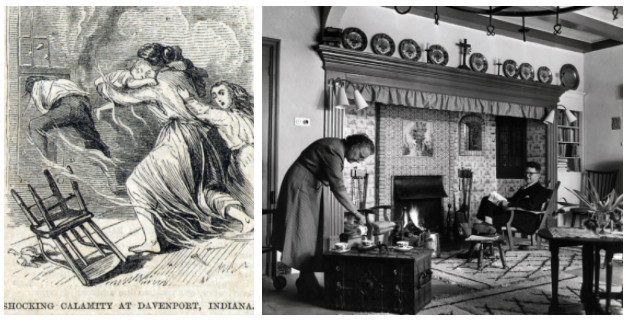History may have passed, but we can still gain insights into the lives of people from the past thanks to the significant contribution of photographs preserved to this day. While they may lack clarity, vibrancy, or color, these images serve as evidence of history.
Are you a fashionable girl, always eager to chase after the latest fashion trends?
If so, thank your lucky stars you were born in the 21st century. Because if you lived in the 19th century with a similar personality, you could have faced the terrifying prospect of being burned alive. The reason is crinoline – a fashionable type of women’s dress during this period.

This is Crinoline – a puffy dress with a steel frame inside.
According to Rare Historical Photos, Crinoline made its fashion debut in the mid-1800s and derives its name from French, where “crin” means “horsehair”, a stiff material made from horsehair, and “lin” refers to linen fibers used to weave fabric.
In the early 1850s, with the invention of the sewing machine, it became one of the most significant innovations of the 19th century, facilitating the mass production of clothing, including undergarments.
Initially, only the upper class could wear this type of dress. It served as a typical symbol of the nobility and wealth of the elite, particularly showcasing the luxury and elegance of high-society women.
During this time, the preference was for dresses that were as wide and voluminous as possible. However, there wasn’t enough horsehair to create Crinoline, and by June 1856, lightweight steel-framed Crinolines were invented. This innovation was patented for the first time in April 1856 by RC Milliet in Paris, and just a few months later, it became extremely popular in England.
Steel Crinoline was mass-produced in large quantities, with factories across Western countries producing tens of thousands each year. Alternative materials such as whale bone, reeds, gutta-percha, and even inflatable rubber (natural rubber) were also used to make Crinoline, but steel remained the most popular material.

In June 1856, lightweight steel-framed Crinolines were invented.
Initially, only the upper class could wear this type of dress. It served as a typical symbol of the nobility and wealth of the elite, particularly showcasing the luxury and elegance of high-society women. Images of such dresses frequently appeared in literary and artistic works.
However, over time, it became increasingly popular. Crinoline gradually became worn by women of all statuses and social classes throughout the Western world, from royalty to factory workers.
There is no denying that Crinoline truly made 19th-century women appear more glamorous with its voluminous, alluring design. It even brought several commendable advantages, chief among them being its weight. These lightweight Crinolines allowed women to shed several pounds of fabric, preventing them from feeling stifled or overheated.
Moreover, going to the bathroom became a much easier task. Many women even found it incredibly convenient as they could store various small items underneath their skirts.


The steel frame could even be used as an umbrella. Quite convenient…
However, Crinoline, while convenient, could also be dangerous if not worn carefully. As time went on, more disadvantages of Crinoline were discovered. The large hoop skirt made it difficult to move, especially when trying to go through doors.
Besides these daily inconveniences, there was a real danger. The dress could turn into a deadly trap if the wearer happened to stand too close to a fire.

This dress could become a deadly trap if the wearer stood too close to a fire.
The reason is that the structure of the dress allows it to trap a significant amount of air underneath. Additionally, due to its oversized dimensions, the dress was also made from a lot of fabric.
This combination made it highly flammable. The steel frame inadvertently turned the dress into a tightly locked cage, making it difficult for the wearer to escape in case of an emergency.
When Fashion Is a… Risk
Another reason fashion during this period was genuinely hazardous is that the fabric used to make the dresses was highly flammable. Tragic stories involving this fabric were common among dancers in the 19th century.
Dancers of that time wore dresses made of multiple layers of fabric to create a flared effect. The stage lights of that period were gas-lit and placed right at their feet.
“Fire close to straw will ignite over time” – an old proverb holds true here.

The fabric used for making dresses back then was highly flammable.
One of the most famous accidents was that of dancer Emma Livry in 1862, who was burned alive when her skirt caught fire from a gas lamp. After the tragic accident, she lived for only eight more months before passing away at the age of 21.
Fortunately, by the end of the 19th century, aesthetic perceptions began to change. The voluminous dress styles were scaled down to reduce the risk of fire, ensuring the safety of the wearers.

Fortunately, by the end of the 19th century, the voluminous dress styles were scaled down.
However, the concern about flammable clothing persisted for a long time. During that period, producers created many lightweight fabrics – such as flannelette (a soft cotton-like fabric). Unfortunately, these would catch fire extremely quickly.
So much so that in 1953, the U.S. government passed a new law requiring manufacturers to produce safer clothing. Subsequently, similar laws emerged in many countries worldwide.


















































